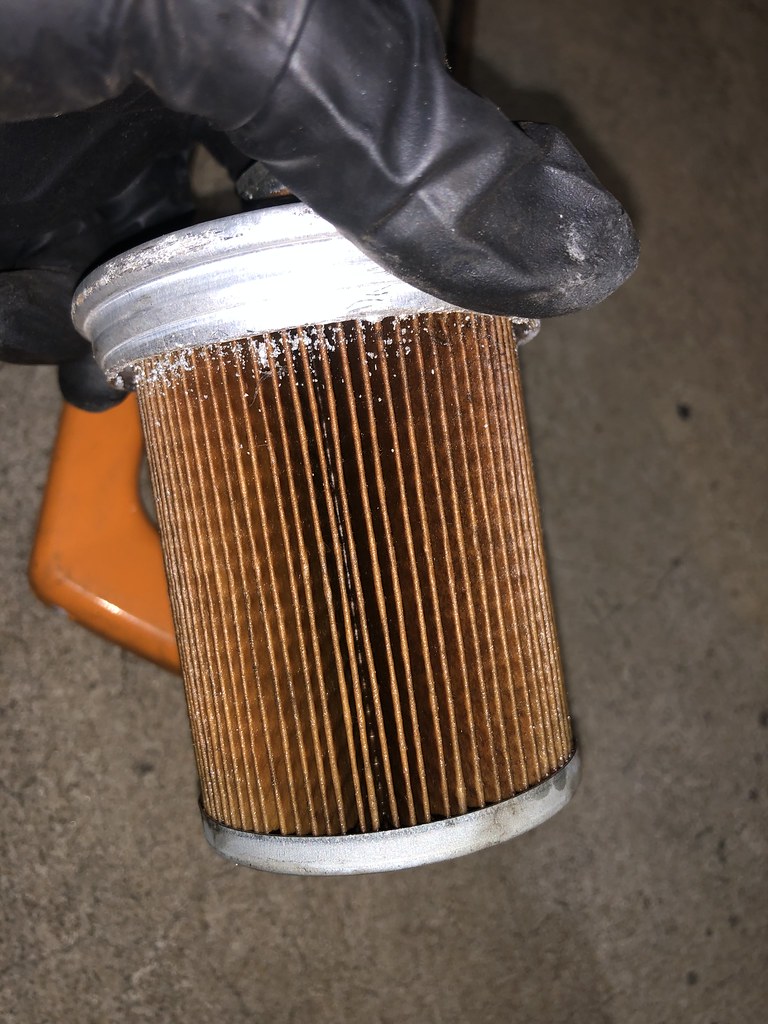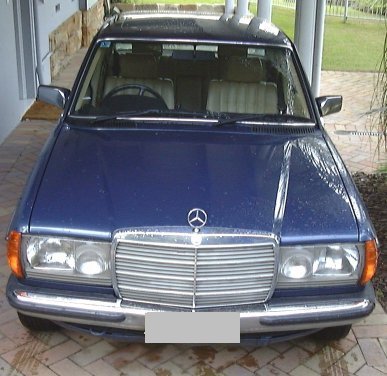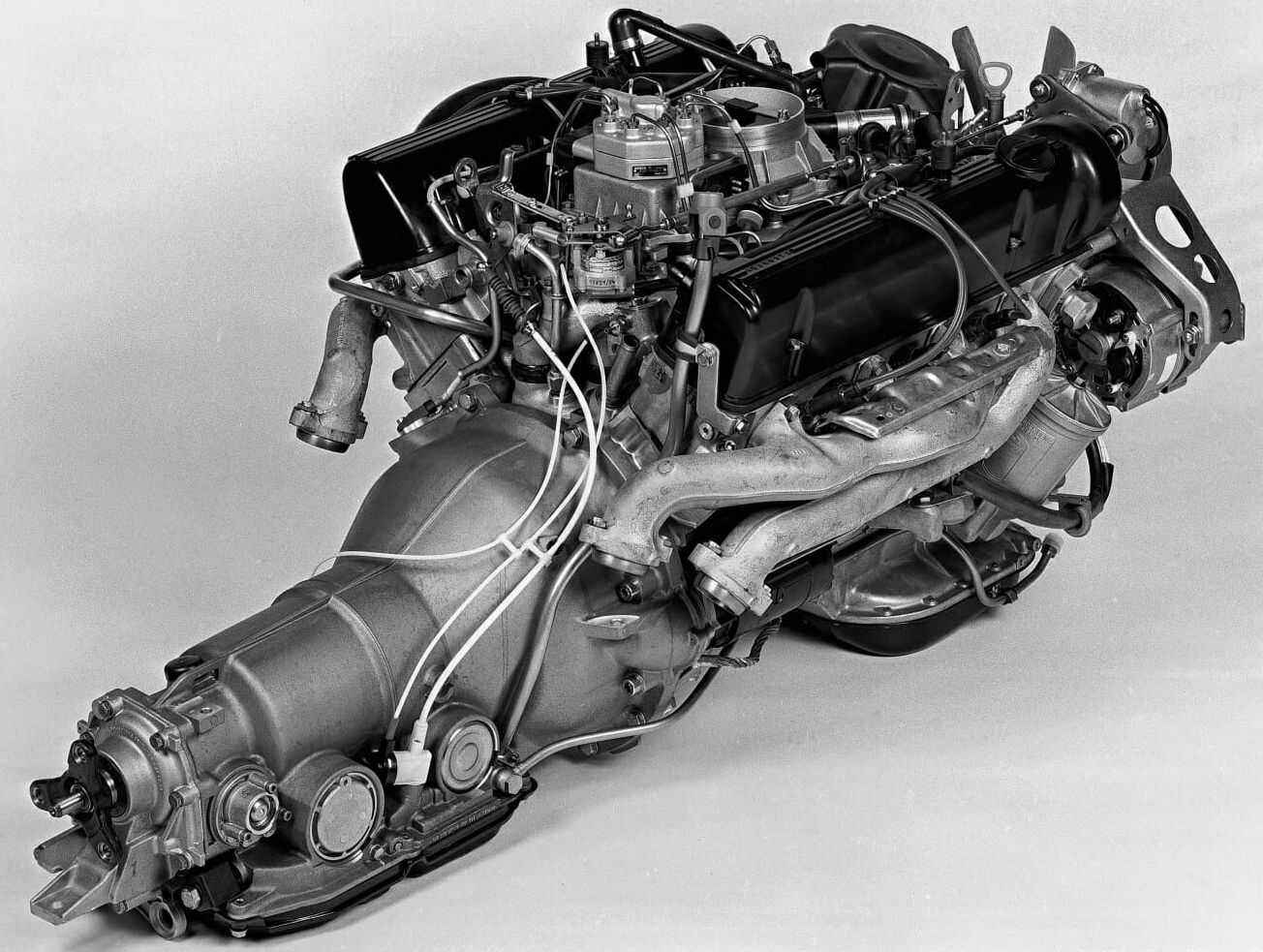W116 fuel filter and fuel strainer
My recently purchased 280SE is not running well. The symptoms feel like it is not getting enough fuel. Strangely enough, performance picked up with more petrol in the tank. Based on that, I wanted to eliminate two fairly obvious things before I started troubleshooting the fuel injection system. Namely, I wanted to make sure the various fuel filters installed on the car were not plugged up, and that I eliminated bad fuel. Mercedes-Benz vehicles of this era are fitted with three fuel filters. There is a fine mesh fuel strainer in the bottom of the petrol tank, next there is the main fuel filter after the fuel pump. Finally, there is another small strainer just before the fuel distributor.
The two fuel strainers are rarely inspected and replaced. I decided that I would drain the fuel, and replace the two rear filters. I have been wanting to buy a waste oil drain tank. I’m always making a mess doing oil and other fluid changes, and I was able to find a good deal on one. This felt like a good opportunity to use it to drain the petrol before I ever use it for oil. It’s not designed for this use, but it felt like the cleanest and safest way of dealing with 30L of petrol.
 Draining the fuel was pretty easy. I disconnected the hose from the exit point of the tank. It connects to a device that I think is some kind of vibration damper. I used a hose clamp so I could control the volume exiting the tank and avoid splashing. As can be seen from the photo above, I used a cloth to see how much debris I was catching, but overall the fuel was very clean.
Draining the fuel was pretty easy. I disconnected the hose from the exit point of the tank. It connects to a device that I think is some kind of vibration damper. I used a hose clamp so I could control the volume exiting the tank and avoid splashing. As can be seen from the photo above, I used a cloth to see how much debris I was catching, but overall the fuel was very clean.
The fuel came out very fast at first, although it slowed down after a while. I suspect the slow down was related to when the level went below the swirl pot. The flow even stopped for a couple of seconds at one point. Regardless, I didn’t see anything that would make me think the pump can’t draw enough fuel from the tank.
To get the fuel strainer out, first the hose needs to be removed from the bottom. This isn’t particularly difficult, but there is very little room to get the spanner in, so you’re turning the hose 1/8 of a turn each time. Once that hose is off, then the strainer can be removed. The same large hex used for the fuel sender is used for the strainer. With the right tool, it is pretty simple to remove.
 As can be seen above, the strainer was dirty, but not all that bad. At least from inspection, and the volume coming out of the tank, it doesn’t appear that this was the reason why the car was not getting enough fuel.
As can be seen above, the strainer was dirty, but not all that bad. At least from inspection, and the volume coming out of the tank, it doesn’t appear that this was the reason why the car was not getting enough fuel.
Next step was the main fuel filter. Since the tank was already drained, there was no need to block off any fuel hoses. Surprisingly, when I got it out, there was not much debris coming out. When I have changed this filter on the 300SE, it has been much dirtier and that car runs well. To do a proper inspection, I cut the filter housing open to check the element. Obviously, being a fuel filter I used hand tools only!
 As can be seen, there was some debris in the housing and in the element, but no more than you would find with a routine filter change. The filter looked fairly new, so I am not sure how long it has taken to build up this amount of debris.
As can be seen, there was some debris in the housing and in the element, but no more than you would find with a routine filter change. The filter looked fairly new, so I am not sure how long it has taken to build up this amount of debris.
 I have not yet put the car back together as I ran out of time, and my new fuel strainer has not arrived yet. At least from visual inspection I don’t think I have solved my problem. I’ll put the car back together with a new fuel strainer, new hose from the tank, new filter and then perform a fuel volume test, followed by a fuel pressure test. The fuel volume test will also allow me to swap the small strainer at the fuel distributor too.
I have not yet put the car back together as I ran out of time, and my new fuel strainer has not arrived yet. At least from visual inspection I don’t think I have solved my problem. I’ll put the car back together with a new fuel strainer, new hose from the tank, new filter and then perform a fuel volume test, followed by a fuel pressure test. The fuel volume test will also allow me to swap the small strainer at the fuel distributor too.
I borrowed the large hex to remove the sender and strainer. Its been a very useful tool, I may want to consider getting one for myself.





























































1 Response
[…] too well, and the symptoms pointed to the car not getting enough fuel. A few weeks ago, I drained all the fuel in the tank and checked the main fuel filter and strainer. After doing all this, the fuel […]